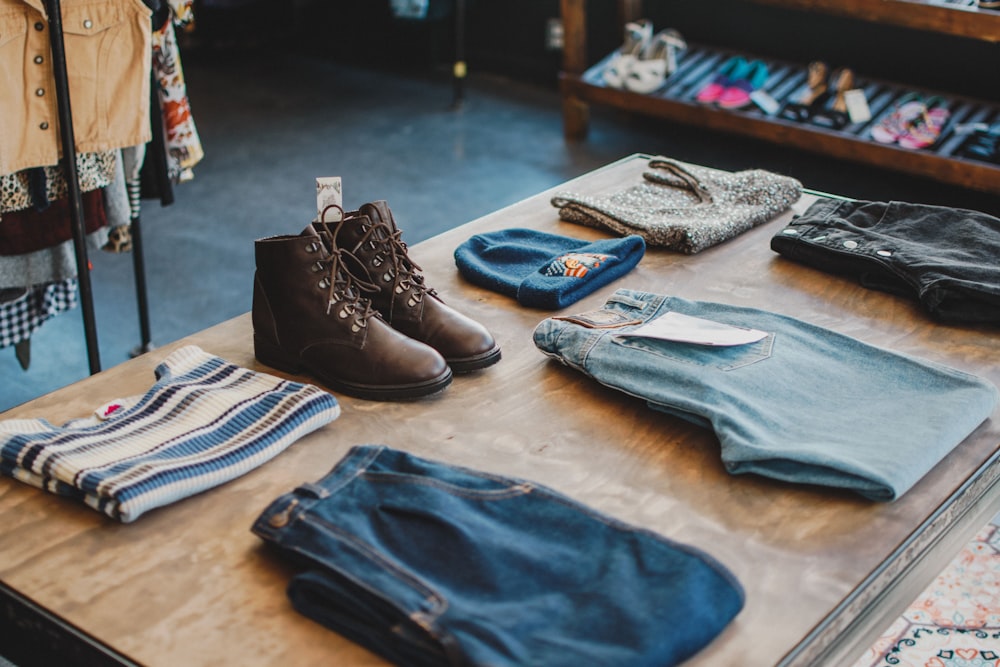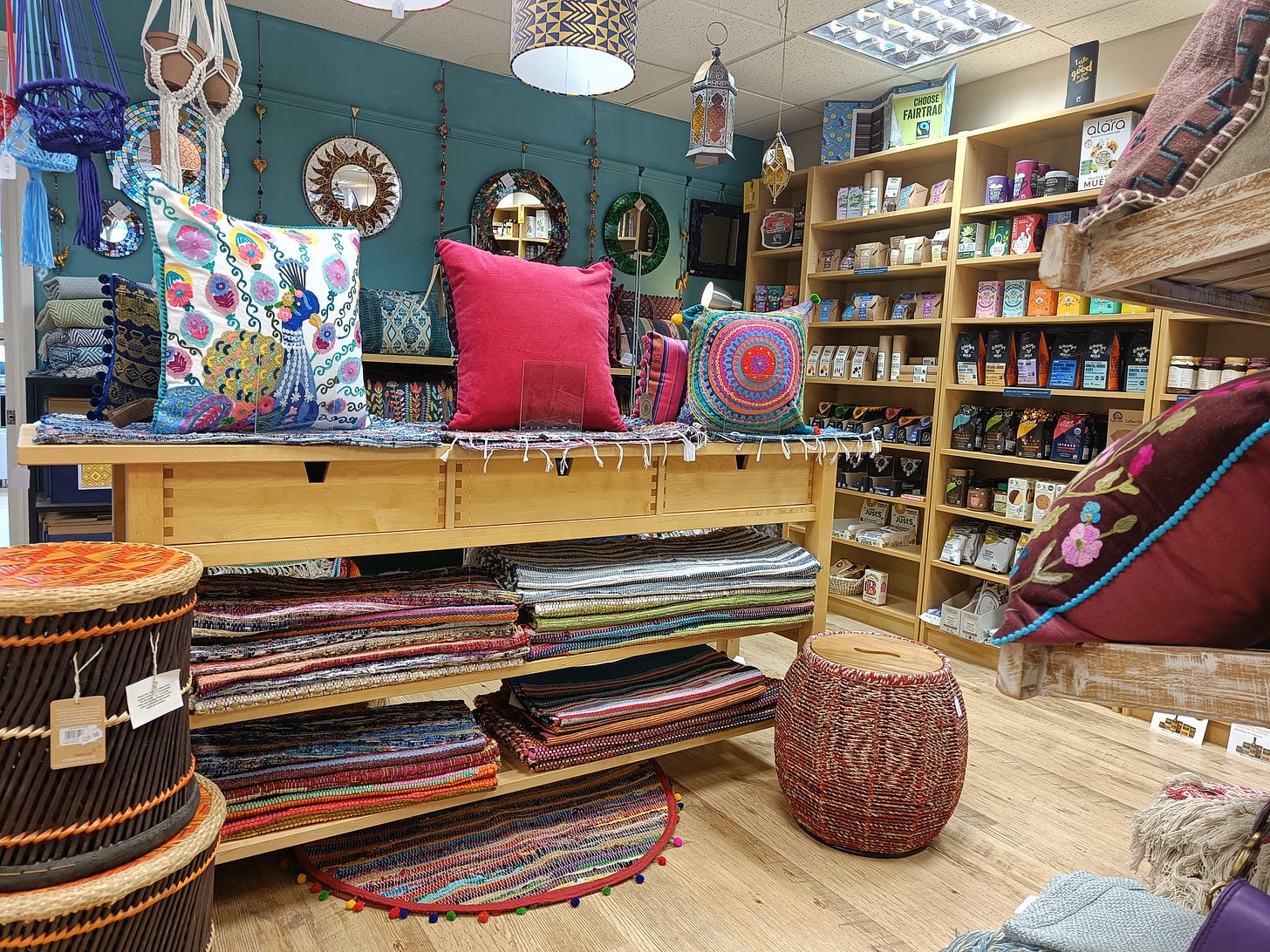Three years ago, I acquired a white fluffy jumper from an online store called DePop at an unbelievably low price and I have not looked back ever since. Since then, restricted funds and a hazy feeling of environmental responsibility, have led me to indulge in thrifting, a simple transition given the availability of Poshmark, ThredUP, EBay, Depop, Mercari, and The RealReal.
Thrifting, often known as thrift shopping or second-hand buying, has been around for years now. In the last couple of years, it has taken on a more polished aesthetic. Gone are the days where disorganized items would be presented to shoppers; now you'll see curated pieces sectioned out on racks within air-conditioned rooms. Thrift stores sell gently worn or pre-loved things. Different people have different reasons for preferring thrifting versus quick fashion. Most people get drawn to thrifting for the aesthetics attached and for the staggeringly low prices that one can source great products at. You may save money, locate unique pieces, and decrease your carbon impact by buying used clothing or household products.
Thrifting offers a sustainable method to stay in style while lowering our carbon impact, particularly against the culture of disposable consumption that fast fashion and its brief trend cycles support. The spotlight has been focusing closer for years to indicate how seriously we are affecting the environment. Many people are adopting more ecologically conscious lives as a result of the current sustainability dilemma. As a result, many customers view used clothing as an economical and environmentally friendly method to stay current with fashion.
Why buy a new straight-leg jean when you can get the same fit from Levi's at your local Goodwill? If you don't feel like digging, how about hot off the legs of your favourite Depop starlet? Bye-bye, bright yellow sack of shame. Second-hand clothing is the obvious successor to fast fashion, as it meets the same criteria for affordability and, owing to the cyclical nature of fashion, trendiness.
Generation Z has adopted second-hand fashion quicker than any other age group, accounting for more than 40% of worldwide shoppers. The shifting consumer habits and massive spending power of Generation Z are propelling the value of resale businesses such as Depop skyward. Since 2016, Alli Vera has sold over 2,600 items of clothes on Depop. The majority of the clothing in her Virginia-based boutique, Colour Club, which specialises in vintage trends from the 1970s to the early 2000s, comes from neighbourhood thrift shops where she resides. The platform, Depop, serves as a snapshot of teen fashion in the digital age, when traditional stores have become obsolete, social media influencers dictate trends, and argyle sweaters are everywhere.
Teenagers of all socioeconomic backgrounds, even those who can afford to buy new products, have learned about thrift shopping thanks to the prevalence and popularity of thrift haul films on TikTok and YouTube. Eve Perez recalls being ashamed to shop at second-hand stores when she was in middle school. Surrounded by classmates wearing name brands, Perez believed there was a stigma involved with wearing worn apparel. Something changed around five years ago, she recalls, just around the time the social networking app Tumblr became famous. She noted a shift in how people regarded buying and wearing worn goods. It became an edgy, countercultural thing to do. Perez, 21, now earns up to $1000 a month by selling both handmade and used goods on Depop, an online resale marketplace with a young customer base.
When conversing with local thrift store owners like Oxfam and The British Heart Foundation, it does not seem surprising when they do not feel a need to advertise themselves or even feel threatened by big brands like Zara and Mango.
“We have marketed ourselves over the years via word of mouth and recently yes have started to be more vigilant about the online stores gaining more popularity. However, we have nailed our target audience over the years and ensured to always be up to date with the latest fashion trends and increase our visibility through our website which has gained a considerable following as well”, says Martha Pine of Oxfam.
When asked about how thrifting has evolved over the years, she went on to say that, “Throughout the last ten years, thrifting has experienced a sort of rebranding. Thrift shopping is being celebrated for its numerous advantages rather than being vilified as a practise. Oxfam has essentially aimed to largely be a part of the desired shopping framework. We keep a selected array of clothing options from well-known brands as well as vintage ones at reasonable prices that has seemed to target the right market.
Vintage shopping currently seems to be one of my most Gen Z activities, and it makes sense considering that thrifting is more than just a shopping strategy for Generation Z—it's a lifestyle.
Olivia McCafferty-Cable, 17, of Dublin, Ireland, has been thrifting since she was 13 years old. “Thrifting enabled me to locate items at extremely low costs that no one else I know possessed. I prefer to stand out with my clothes, especially at school, since I am a pretty shy person, and thrifting allowed me to express myself and step outside of my comfort zone”.
Hannah Valentine from Brighton, Sussex hardly recalls her first ever thrifting experience, so embedded it has become to her identity. “For years, thrifting has been a mainstay in my life. I'll never grow tired of the sense of adrenaline I feel when I go into a thrift store not knowing what I'll find that day. Now, I thrift to help keep items from being thrown away, as well as to provide a simple and accessible alternative for individuals to purchase second-hand rather than on fast fashion websites”.
Elena Dunn-Barcelona, from Oxford says, “During my final year of high school, I developed a love for thrifting since it enabled me to compete with my friends' fashion sense at an eighth of the cost. Thrifting has shown me that there are several ways in which I may make a difference in this society. I now have a doorway into a new way of living that seems more fruitful and meaningful.”
Second-hand businesses have not only diverted consumers away from rapid fashion, but they have also produced an "elitist culture." Second-hand businesses have begun to replace fast fashion as individuals buy second-hand goods in equal or greater quantities due to reduced pricing. Thrifted clothing is distinctive in a digital age when fashion is always on show, and rapid fashion has greatly reduced expectations about cost.




